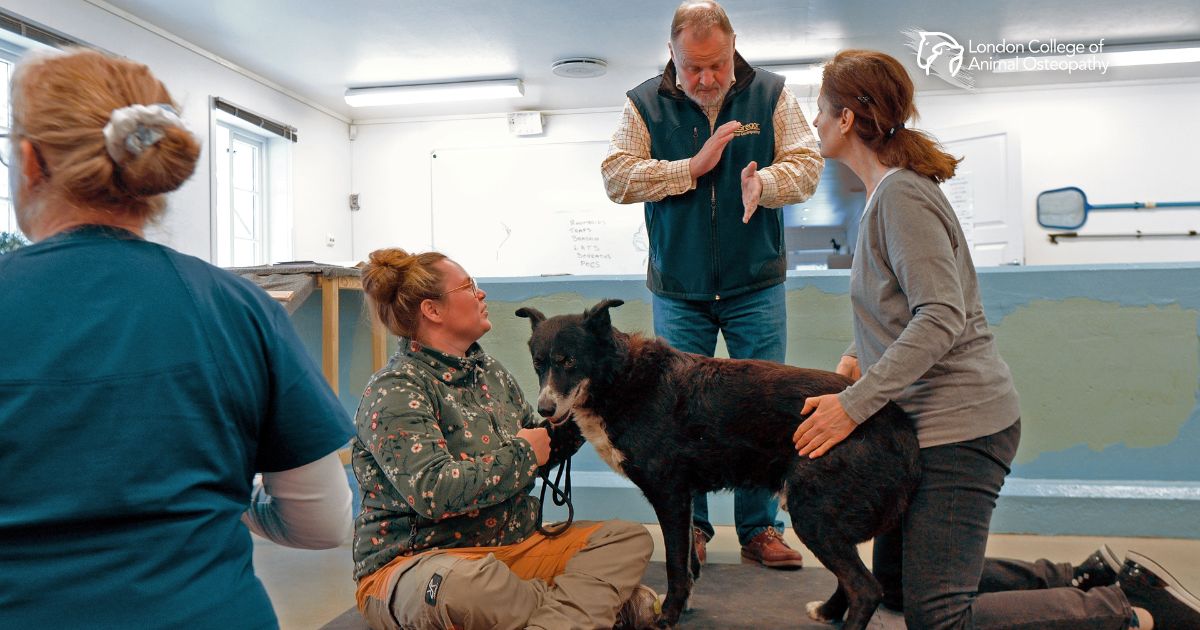The practice of osteopathy has long been associated with human health, focusing on structural balance, functional movement, and the intricate relationship between body systems. However, in recent years, there has been growing recognition of the profound benefits osteopathic principles can bring to the care of animals. For qualified human osteopaths, this represents a unique and expanding opportunity: the ability to transfer core knowledge and skills into an area with high demand and limited supply.
Why Animal Osteopathy Needs You
Animal osteopathy is a rapidly developing discipline, but the number of trained practitioners remains small compared to demand. Across Europe, North America, and beyond, there are relatively few specialists offering osteopathic care to horses, dogs, and other companion or performance animals. At the same time, awareness among owners, trainers, and veterinarians is increasing. They are seeking complementary, non-invasive approaches that improve musculoskeletal health, enhance performance, and support recovery from injury.
The reality is clear: while human osteopathy is well established, animal osteopathy is still in its growth phase, and there are more animals in need than practitioners available. This shortage translates into a genuine opportunity for qualified osteopaths who want to diversify their careers, broaden their client base, and contribute to a field that is still defining its future standards.
The Transferable Skills You Already Have
The transition from human to animal osteopathy is more natural than many assume. Core osteopathic principles - structure-function interdependence, and the body’s inherent ability to self-heal - apply across species. Your expertise in palpation, tissue assessment, and biomechanical analysis gives you a strong foundation.
However, working with animals requires additional knowledge: comparative anatomy, species-specific biomechanics, behavior, and safe handling techniques. These elements form the bridge between what you already know and what you need to learn. The good news? Many of the diagnostic reasoning skills, clinical thinking, and manual techniques you use every day remain highly relevant, simply adapted for a quadruped rather than a biped.
Why Adding Animal Osteopathy Makes Sense
For practitioners, expanding into animal osteopathy offers both professional and personal benefits:
- Diversification of Practice: Adding animals to your caseload can make your business more resilient and adaptable, particularly in times when human clinical demand fluctuates.
- Intellectual Challenge: Working across species demands critical thinking and a deeper appreciation of functional anatomy, keeping your skills sharp and your work stimulating.
- Meeting a Real Need: Whether it’s improving a horse’s gait, reducing pain in a senior dog, or aiding post-operative recovery, your interventions can make a profound difference to animal welfare.
- Professional Satisfaction: Many practitioners describe animal work as deeply rewarding. The visible, often rapid changes in comfort and mobility can be striking, and the bond between animal and practitioner is unique.
Is It Right for You?
Transitioning to animal osteopathy does require formal training. Responsible practice means understanding not only anatomy and biomechanics but also the ethical and legal frameworks for working with animals in your region. In most countries, animal osteopaths work collaboratively with veterinarians and other allied professionals, ensuring a high standard of care.
For those willing to undertake the additional learning, the rewards are significant. You will join a small but growing community of professionals shaping the future of integrative animal healthcare, while maintaining the essence of what drew you to osteopathy in the first place: restoring balance, supporting function, and promoting wellbeing.
A Growing Field with Room to Grow
The shortage of trained animal osteopaths is not a temporary gap, it is a systemic need. Companion animals are living longer, equestrian sports are more competitive, and owners are increasingly informed and proactive about preventive care. These factors point to sustained demand for skilled practitioners who can bridge the worlds of human and animal osteopathy.
If you are an osteopath ready for your next challenge, consider this: the principles you already master are universal. What changes is the application, and the patients, who may wag their tails or whinny their thanks.



.png)
.png)